
The Great Synagogue Budapest On Dohány Street – immerse yourself in the capital’s Jewish history
There are many elements that have gone into making Budapest such a rich, colorful and interesting city. The Great Synagogue Budapest and many other beautiful buildings from the Jewish history are one of them.
O
C
That vital element has been provided by the city’s Jewish community who have created a distinct sense of Jewish Budapest. There are many ways to enjoy this cultural and spiritual influence, but perhaps the most rewarding and authentic, is to visit some of the wonderful synagogues that are located in Budapest. Here we present the most well-known synagogues, and just some of the lesser-known, but all of them offer a taste and understanding of Budapest’s Jewish heritage. Here is a list about them:
Visit the Great Synagogue Budapest on Dohány Street

Of all the synagogues in Budapest, this is the one that is truly world-famous. Constructed in 1859, it has endured a remarkable history ever since: attacked with explosives by pro-Nazis in 1939, and then, during WW2, it was taken over by German troops who used it for as radio communications center. There then followed additional damage by air raids and then further destruction during the Siege of Budapest. Following the war, the Dohany Street Synagogue was left in poor condition for decades, until in 1991 when renovation began. Prominently-displayed, it is immediately recognizable with its black and gold, bulb-shaped domes and ochre-colored brickwork.

The amazing architecture of the Great Synagogue in Budapest
Immerse in the history of the Great Synagogue we can learn that this marvelous establishment is not just a place of religion – it is a Jewish museum too!
The central synagogue is the largest practicing synagogue in Europe and remains a Jewish cultural treasure trove for all visitors. Within its confines, you’ll find the Hungarian Jewish Museum and its archives. The Museum itself, during WW2, was once the only means of escape from what had become ‘The Budapest Jewish Ghetto’. The Jewish Cemetery here is a testament to those horrific times and to the people who never managed to escape. The same is true of the Raoul Wallenberg Holocaust Memorial Park with its weeping willow and the names and tattoo numbers of the victims who died or disappeared during the period of the ‘Jewish Ghetto’.
Another wonderful synagogue of Budapest: Rumbach Street Synagogue

This delightful synagogue was built by the renowned Viennese architect Otto Wagner (the only building he ever built in Budapest.) It showcases many of the exquisite traits associated with his designs, but also hints at Wagner’s influence by Islamic architecture: a main feature of the synagogue is an octagonal, balconied dome. It is by no means a piece-by-piece copy of the ‘Dome of the Rock’ shrine located in Jerusalem, but Wagner was clearly inspired to reveal his admiration of the Islamic shrine’s design and beauty.
Kazinczy Street Synagogue – another breathtaking establishment next to the central synagogue

Built in 1913, this synagogue of the Orthodox Jewish congregation, is not as prominently displayed as the Dohany Street and the Rumbach Street synagogues, but it’s well-worth a visit and it’s easily found. The intricate detail of the façade has been much-admired since its construction, while the colorful, and wonderfully pieced-together interior details of the synagogue are a genuine delight.
Synagogues Outside of Budapest’s Jewish Quarter
Visit the synagogue of Vasvári Pál Street

Another gem hidden away in the streets close to the Jewish Quarter, this synagogue was completed in 1887. The synagogue has proved to be important, not only as a place of worship, but also as an academic seat of learning. Managed by the Hungarian Chabad of Hungary, a great emphasis on study and contemplation continues to this day.
Visit the Jewish Synagogue of Újpest

Located in the northern district of Újpest, the synagogue here is another well-preserved and well-presented Jewish house of worship. A notable Holocaust memorial is present here. The memorial was unveiled by the President of Hungary and it bears the names of 17,000 local Jewish residents who perished in the Holocaust.
Medieval Synagogue of Buda

A long-lost synagogue in the heart of the Buda Castle, the Medieval Synagogue of Budapest, is at last open to the public again. It was built in 1364, but ‘vanished’ following the Buda Castle’s liberation by Christian forces in 1686. The castle had previously been captured and held by the Ottoman Turks. In the centuries that followed 1686, the synagogue became a residential property, and would have remained so, had it not been for some renovation work in the 1960s: painted inscriptions were discovered which clearly told of the property’s Jewish past. In 2018, with the Hungarian President in attendance, the synagogue was finally rededicated.
Synagogue of Kőbánya (The Church of Everyone)

Opened in 1911, the Synagogue of Kőbánya, built according to the design of Richárd Schöntheil, is presently a Pentecostal church. The building is undeniably impressive from the outside, and the atmosphere is undeniably soothing within. Most of the original design features are still preserved, and for all of these reasons, this is a building that is worth visiting.
Synagogue of Óbuda

Externally, the striking feature of this synagogue is apparent as soon as you set eyes on the edifice: it is decidedly Classicist. (However, to be precise, the synagogue is described as being ‘French Empire’ in style.) Due to a 1712 ban on Jewish residents in Buda, a great many families of the Jewish faith settled in Óbuda. By 1821, the year of the synagogue’s completion, Óbuda had the largest Jewish community in the whole of Hungary, but this slowly changed due to the economic gravity of a flourishing Pest. Recently, the synagogue housed a television studio, but since 2010, once more it has been established as a fully-functioning synagogue of the community.
What are the movements of prayer?
When adopting the proper posture for prayer, it’s crucial to do so in the most natural way possible. Everyone must stand during certain parts of the service:
- When reciting the Baruch Sheamar, the Shemoneh Esrei,
- From Vayevarech David until the prayer leader reaches the Borchu section,
- When the Kedusha is said during the repetition of the Amidah,
- When the Ark is open,
- When the Torah is taken out of the Ark.
Bowing
Bowing is perhaps the most widespread and associated gesture with the Jewish prayer order, despite not being specifically prescribed by Jewish law or even generally recommended as a custom. Some people bow slightly during their prayers, while others incorporate quick and almost exaggerated movements. Still, others, including great and pious Jews, pray almost motionless.
Language of Prayers: Hebrew?
For those who do not understand Hebrew, it’s a valid question how to strive for devotion during prayers without knowing or understanding the words. The desirable language for reciting Jewish prayers is Hebrew, but it’s not strictly necessary to pray in Hebrew. Halacha (Jewish law) stipulates that prayers can be recited in any language that one understands. What’s important is that the congregation prays collectively in Hebrew.
Largest European Synagogue In Budapest?
The Dohány Street Synagogue, built in the 1850s based on the plans of the famous Viennese architect Ludwig Förster and designed in Moorish style to meet the requirements of historicizing architecture using the most advanced technical solutions of the time, primarily cast iron elements, has become and remains one of the largest synagogues in the world. It can only be competed with by the synagogue in Amsterdam. Despite the tragic history of Hungarian Jewry in the 20th century, the building has fortunately been preserved and is still one of the main attractions in Budapest.
What do you wear to the synagogue in Budapest?
Budapest Synagogue Dress Code
Men cannot enter the synagogue without a head covering. Any hat or cap is suitable for this purpose. In most places, kippahs, kippot, or yarmulkes (head coverings) are worn because they are comfortable and lightweight. Most synagogues provide such head coverings at the entrance for those who may arrive without one. The kippah itself does not carry special religious significance, but wearing a head covering, especially in a sacred place and while praying, is an ancient Jewish form of expressing reverence for God. It is said, “Cover your head so that the fear of heaven may be upon you.”
Women are only expected to cover their heads if they are married. A woman should not enter the synagogue in sleeveless, boldly cut front or back dresses, miniskirts, or pants. Dress code that complies with the latest fashion may be suitable for a large-scale social event but does not meet Jewish standards. Our attire is determined by good taste and common sense. As a general rule, modest dress is always appropriate.
Which is the oldest Synagogue in Hungary?
Hungary’s oldest synagogue still open to visitors is the Gothic-style Sopron Old Synagogue, built at the end of the 13th century. In accordance with the customs of the time, the women’s section is separated from the red-painted interior by a wall with narrow, loophole-like windows. The building was once part of a community complex that included other communal institutions and a ritual bath.
Which is the oldest Operating Synagogue in Budapest
Budapest’s oldest operating synagogue is the Óbuda Synagogue, which has recently been renovated. It originally dates back to the 1760s, designed by Máté Nöpauer, and was later refurbished and reconstructed in 1820 based on the plans of András Landherr, featuring a classical façade with baroque elements inside.
Which is the most Ornate Synagogue in Budapest?
Perhaps the most ornate synagogue in Budapest is the Kazinczy Street Orthodox Synagogue, built in the 1910s. The simple exterior reveals nothing of the richly decorated, Art Nouveau interior, complete with painted walls and ceilings. True to the nature of applied arts in the Art Nouveau movement, every element inside bears the style’s characteristics. The building was designed by Sándor and Béla Löffler and is part of the Orthodox Jewish community’s complex, including other communal and religious spaces.
Is the Budapest Synagogue Free?
No:(
Entrance fee: how much does it cost to go to the synagogue in Budapest?
Adult ticket: 10,800 HUF
Student ticket: 8,600 HUF
Child ticket (6-12 years old): 4,000 HUF
Family ticket (two adults, two children): 25,000 HUF
Are There Tours of the Budapest Synagogue?
Yes, many offer such tours. The official Jewish Quarter tour is available on Sundays at 10:30 and 13:00, covering four synagogues. The ticket price per person is 32,700 HUF.
Which is the most Famous Synagogue in Budapest?
The most famous synagogue in Budapest is the Dohány Street Synagogue, located just a few minutes from the city center.
When is the Budapest synagogue open?
Closed every Saturday, open on other days from 10 AM to 4 PM, and on Fridays only until 2 PM. It’s important to note that the ticket office closes one hour before the synagogue closes.
How Many Synagogues Are There in Budapest?
There are a total of 16 synagogues in Budapest, including the most well-known ones mentioned above.
Other delightful synagogues, definitely worth visiting
– Frankel Leo Street Synagogue (Budapest, Frankel Leó út 49.)
– Hegedűs Gyula Street Synagogue (Budapest, Hegedűs Gyula u. 3.)
Did You Know – Interesting fact
The Tree of Life holds deep significance in Jewish culture, symbolizing the eternal, interconnected nature of creation, wisdom, and the Torah. It is often depicted in Jewish art and literature, representing the divine plan for the universe and the interconnectedness of all life forms. This concept is rooted in the Kabbalah, Jewish mysticism, where the Tree of Life (usually shaped as a willow tree) is a central metaphor in the mystical interpretation of the Torah, illustrating how the universe came into existence and how it is sustained by divine law.
Synagogue in Budapest Hungary – summary
The Jewish community in Budapest, one of the largest in Central Europe, boasts a vibrant history and culture that dates back centuries, contributing significantly to the city’s rich cultural tapestry. Today, it continues to thrive, maintaining its traditions and religious practices while actively participating in Budapest’s social, cultural, and educational life. The Budapest Dohany Great Synagogue is a perfect example for this.
The Dohány Street Synagogue, also known as the Budapest Great Synagogue, stands as the largest synagogue in Europe and the second largest in the world, drawing visitors from across the globe. Those who visit Budapest are often captivated by its stunning architectural design during guided tours, which reveal the rich history and cultural significance of this central place of worship. The synagogue not only serves as a major religious site but also as a key attraction for those looking to delve into the historical and architectural marvels of the city.
Before visiting any of the synagogues mentioned above, inquire about the opening hours and adhere to the appropriate dress code rules.
- Largest European Synagogue In Budapest?
- The Dohány Street Synagogue, built in the 1850s
- Which is the oldest Synagogue in Hungary?
- Óbuda Synagogue, which has recently been renovated.
- Is the Budapest Synagogue Free?
- No:(
- How much does it cost to go to the synagogue in Budapest?
- Adult ticket: 10,800 HUF Student ticket: 8,600 HUF Child ticket (6-12 years old): 4,000 HUF Family ticket (two adults, two children): 25,000 HUF
- Which is the most Famous Synagogue in Budapest?
- The most famous synagogue in Budapest is the Dohány Street Synagogue
- When is the Budapest synagogue open?
- Closed every Saturday, open on other days from 10 AM to 4 PM, and on Fridays only until 2 PM. It’s important to note that the ticket office closes one hour before the synagogue closes.
Related Articles
-

Your ultimate itinerary to exploring Budapest in 1, 2 or 3 days
-

Find the best apartment for rent in Budapest
-
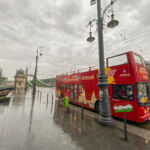
The ultimate hop on-hop off sightseeing tours in Budapest
-
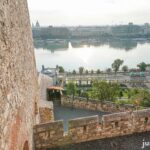
The Best 90 attractions of the Buda Castle District, in the heart of Budapest
-

Budapest card
-
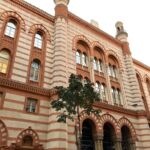
Rumbach Street Synagogue – The Beautiful Spot of the City


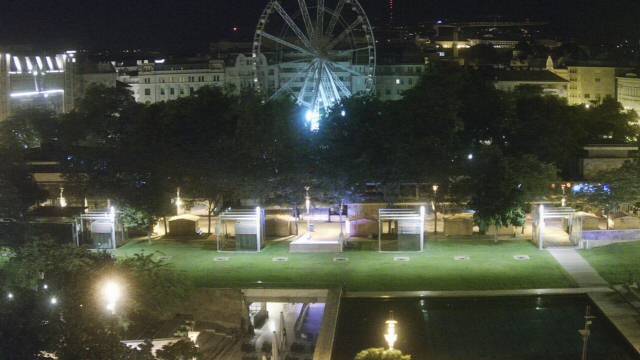

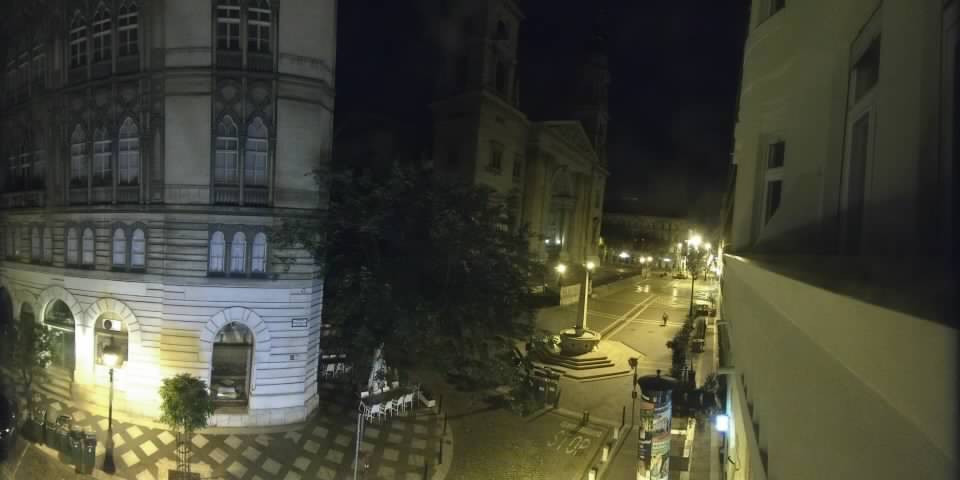

Your experience is important.
Anything you have not found?
Ask a Question
Please log in to write a review.
There is no review yet.